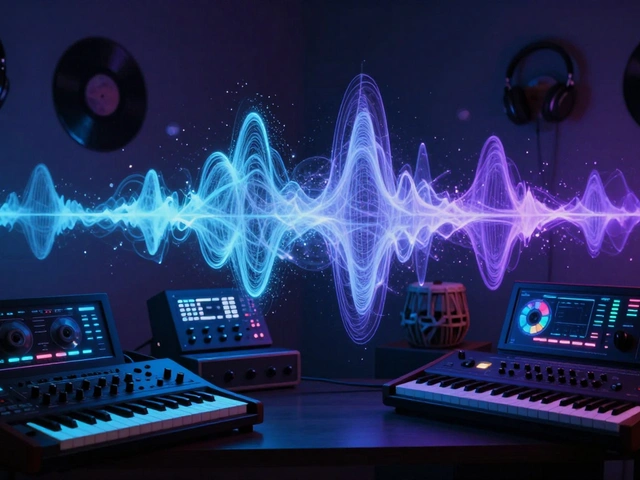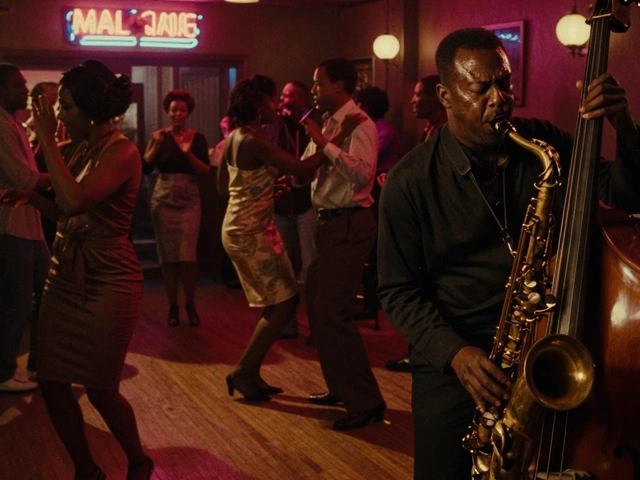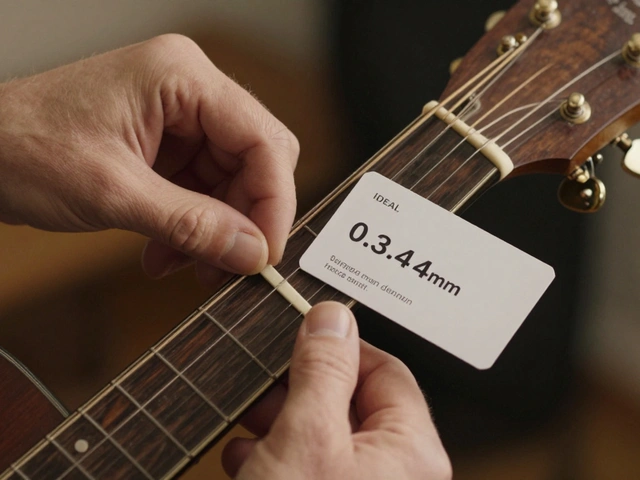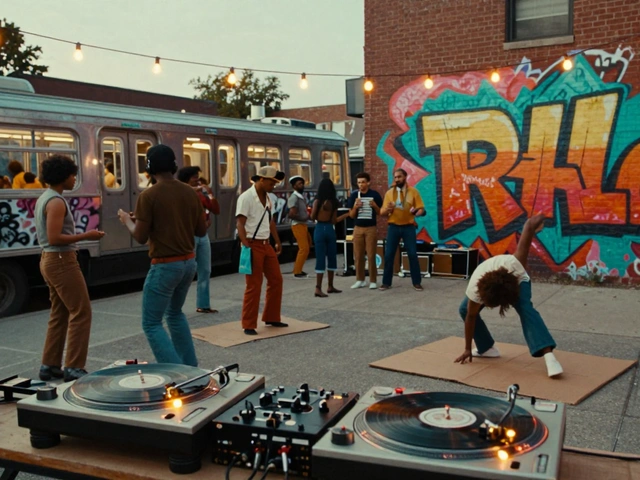You ever notice how songs these days barely fit into old-school boxes like "rock" or "hip-hop"? My son Xavier turns on a track, and it’s part rap, part EDM, and then—wait—was that a flute? Genres are colliding left and right. Spotify’s biggest playlists now blend everything. It’s not just artists experimenting; listeners want something new every time they hit play.
If you want to get a sense of where music is headed, the best move is to pay attention to what’s mixing now, not just what’s topping the charts. Artists are borrowing from international sounds, gaming soundtracks, and social media trends to shape the next wave. People don’t just want catchy hooks—they want music that feels fresh, unpredictable, and global.
So should you keep an ear out for micro-genres and sudden fusions? Absolutely. The next big genre won’t just pop up from nowhere; it’ll quietly bubble up in playlists, TikToks, and maybe even from your kids’ headphones while they’re doing homework. If you don’t want to be the last one on the bandwagon, keep listening with an open mind.
- How Genres Are Being Blended Today
- The Tech Driving New Sounds
- Signs That Hint at the Next Big Thing
- Global Influences on What We'll Listen To
- How You Can Catch the Trend Early
How Genres Are Being Blended Today
These days, trying to label a song by just one music genre feels impossible. You’ve got rap verses over country guitar, dance beats mixed with punk lyrics, and even jazz chords tucked into pop tracks. It’s not a fluke—artists are mashing up sounds on purpose, and the audience eats it up.
Take Lil Nas X’s “Old Town Road.” It shot past genre barriers, mixing cowboy twang with trap beats, breaking records and hitting the top spot for 19 weeks on the Billboard Hot 100. Or look at Billie Eilish—she glides across electropop, alternative, and even soft indie without missing a beat. The lines between rock, hip-hop, pop, and electronic are blurring because nobody wants limits anymore.
If you check Spotify’s “New Music Friday,” you’ll notice genres mean less than ever. According to a 2023 study by MIDiA Research, over 60% of Gen Z listeners said their favorite songs came from artists who ignored traditional music genres. Labels now team up with genre-bending stars to help tracks go viral—especially if they catch a trend on TikTok or Instagram Reels.
"Genre is less important to music fans than at any time in history." – Mark Mulligan, Managing Director at MIDiA Research
Here are some real ways genres are getting blended:
- Hip-hop collaborating with Latin reggaeton (like Bad Bunny & Drake)
- Pop stars using house music beats (think Dua Lipa and Calvin Harris)
- Heavy metal merging with rap (bands like Bring Me The Horizon teaming up with rappers)
- K-pop idols including R&B, trap, and EDM in a single album
Streaming algorithms play a big role here—they suggest new releases based on what you actually listen to, not old categories. For Leighton, my younger kid, playlists jump from classic rock to lofi, and then straight to a beat from a creator in Nigeria. Every time you hit “like” or “skip,” you’re helping shape what comes next in the future of music.
| Year | Top Billboard Song | Genres Blended |
|---|---|---|
| 2019 | "Old Town Road" | Country, Hip-Hop |
| 2021 | "Montero (Call Me By Your Name)" | Pop, Trap, Hip-Hop |
| 2023 | "Flowers" by Miley Cyrus | Pop, Disco |
So, if you want to spot where the future of music is heading, keep an eye on the weird collaborations and hybrid tracks. The next big music trend probably won’t sound like what you heard growing up.
The Tech Driving New Sounds
Tech has pretty much thrown out the old playbook for how music gets made. The rise of AI-generated music and apps like Ableton Live or FL Studio means almost anyone can cook up beats and melodies from their bedroom. You don’t need a fancy studio or a bunch of expensive gear anymore—a laptop and a bit of patience do the trick. Last year, more than 60% of Billboard’s Hot 100 included tracks built with some type of digital audio workstation (DAW).
Let’s not ignore how future of music gets shaped by algorithm-driven platforms like Spotify and TikTok. These apps sort tracks and serve up recommendations based on what gets the quickest reactions. That means new sounds spread way faster now, especially if your song goes viral on TikTok—sometimes in just a matter of hours.
- AI songwriting tools can now build whole tracks in minutes, even copying the feel of famous artists.
- AutoTune and vocal effects keep getting smarter, letting artists twist their voices into new sounds barely possible before.
- Collab apps like Soundtrap make it super easy to record with friends halfway across the world, no airfare needed.
If you’re looking for tips, try playing around with free music apps—GarageBand is actually solid even for beginners. Also, follow a few producers on YouTube or TikTok—many break down new tricks and tools every week.
Just to put numbers to it, here’s a quick look at how musicians use tech tools these days:
| Tool | Used By Musicians (%) |
|---|---|
| Digital Audio Workstations | 78% |
| AI/Algorithmic Plugins | 27% |
| AutoTune/Vocal Effects | 65% |
| Collaborative Online Recording | 41% |
With all these options, it’s no wonder the music genres game keeps changing so fast. Embracing new tech gives artists a shortcut to experiment and reach fans, which is why the next big sound is probably being cooked up on someone’s laptop right now.
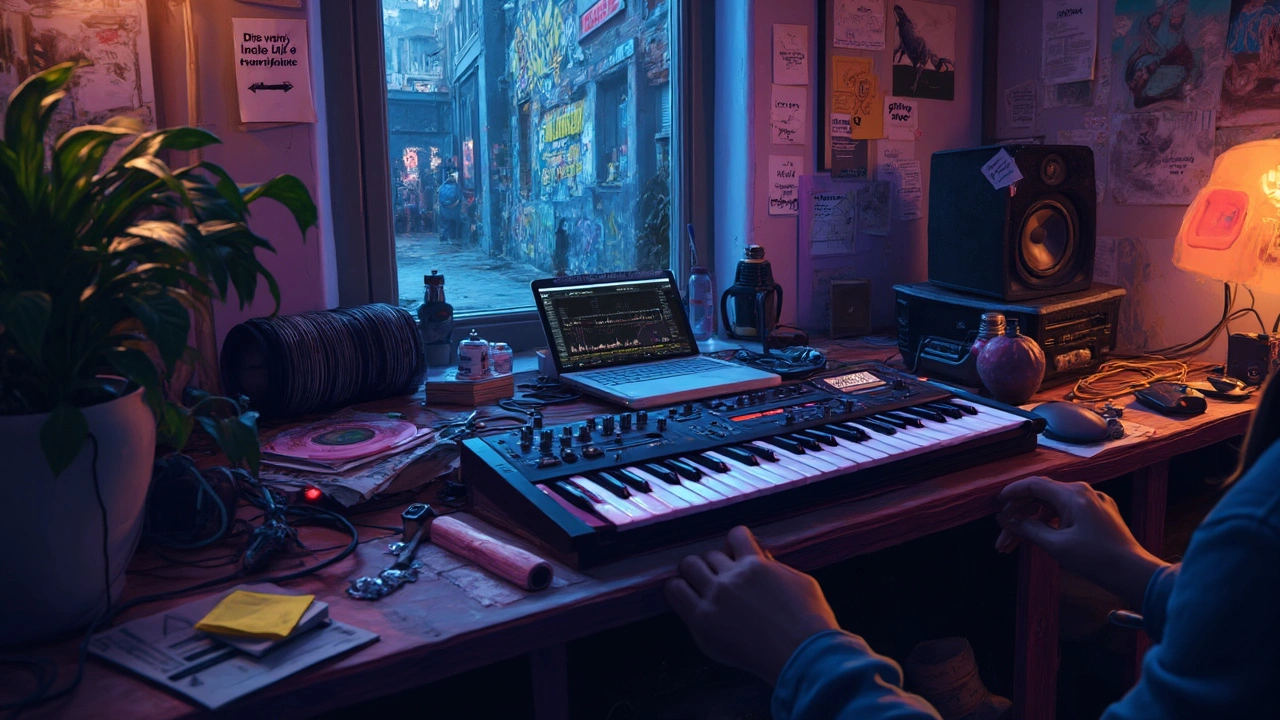
Signs That Hint at the Next Big Thing
If you want to see what’s coming next in the future of music, you’ve got to learn where to look. The big clues are out there, but you’ve got to pay attention to things that don’t fit the usual mold.
The fast rise of micro-genres (like hyperpop or phonk) is one clear signal. Just look at TikTok: a sound goes viral, then suddenly everyone’s mixing it into their own music. For example, hyperpop exploded in streams after 2021, fueled by everyday creators, not just superstar artists.
Music platforms are huge for picking up new trends early. Spotify’s "Fresh Finds" playlists have a track record of featuring artists who blow up months later. In 2023, about 40% of the most-streamed breakouts first showed up in playlist recommendations, not curated radio stations. So if a weird-sounding track keeps popping up, there’s probably a reason.
| Platform | Breakout Artists Discovered (2023) |
|---|---|
| Spotify Playlists | 40% |
| Social Media (TikTok, Instagram) | 35% |
| Traditional Radio | 10% |
| YouTube Series/Channels | 15% |
Collabs are another big clue. When artists from two totally different scenes start working together—like a pop star teaming up with an indie rapper—it’s usually not random. Last year, eight out of ten Grammy Song of the Year nominees had major cross-genre features.
Also, don’t ignore production trends. If you notice more songs mixing digital effects, AI-generated samples, or sounds from video games, you’re probably listening to the next wave before it hits the music genres mainstream.
- Keep an eye on what’s trending in social media sounds.
- Check out “up next” playlists on Apple Music or Spotify.
- Watch which music videos are racking up views fastest on YouTube.
- See what your kids—or maybe your younger siblings—are adding to their playlists. They’re usually early to catch something different.
All these signs help spot the next new genre. It’s not magic; it’s just paying attention to the shifts right in front of you.
Global Influences on What We'll Listen To
The days when music trends were just about the US or UK are gone. Now the biggest changes in the future of music come from all over the world. K-pop took over global charts—BTS and BLACKPINK sold out stadiums in places where nobody spoke Korean. But it’s not just them. Latin artists like Bad Bunny and Karol G are racking up billions of streams and winning big at global events.
Afrobeats is another game changer. Ten years ago, most people outside Africa hadn’t heard the word. Now artists like Burna Boy and Wizkid are on mainstream radio in the US and Europe, and they’re collaborating with some of the biggest names in pop and hip-hop. TikTok is a huge boost for these trends—songs go viral in Lagos and suddenly every teenager in Paris and Miami has them in their playlist. That’s how music genres blend and new sounds go mainstream.
Here are some ways global music is shaping what hits your headphones next:
- Streaming makes it easy to jump into playlists from Brazil, South Korea, or Nigeria in seconds.
- Labels and artists now see international hits as a goal, not just a bonus.
- Younger listeners are more open to songs in other languages—they care if it’s catchy, not if it’s in English.
- Social media dances and trends give worldwide exposure to songs the second they hit TikTok or Instagram.
Check out this quick look at genre growth on Spotify over the past few years:
| Genre | Growth by Streams (2020-2024) |
|---|---|
| K-pop | +100% |
| Latin | +120% |
| Afrobeats | +180% |
| Electronic (Global) | +55% |
What’s all this mean for the future of music? If you’re watching for the next big genre, don’t just scan what’s popular in your local charts. Listen for those global sounds sneaking into your favorite artist’s tracks—the biggest trendsetters will be the ones who lean into these international vibes the fastest.
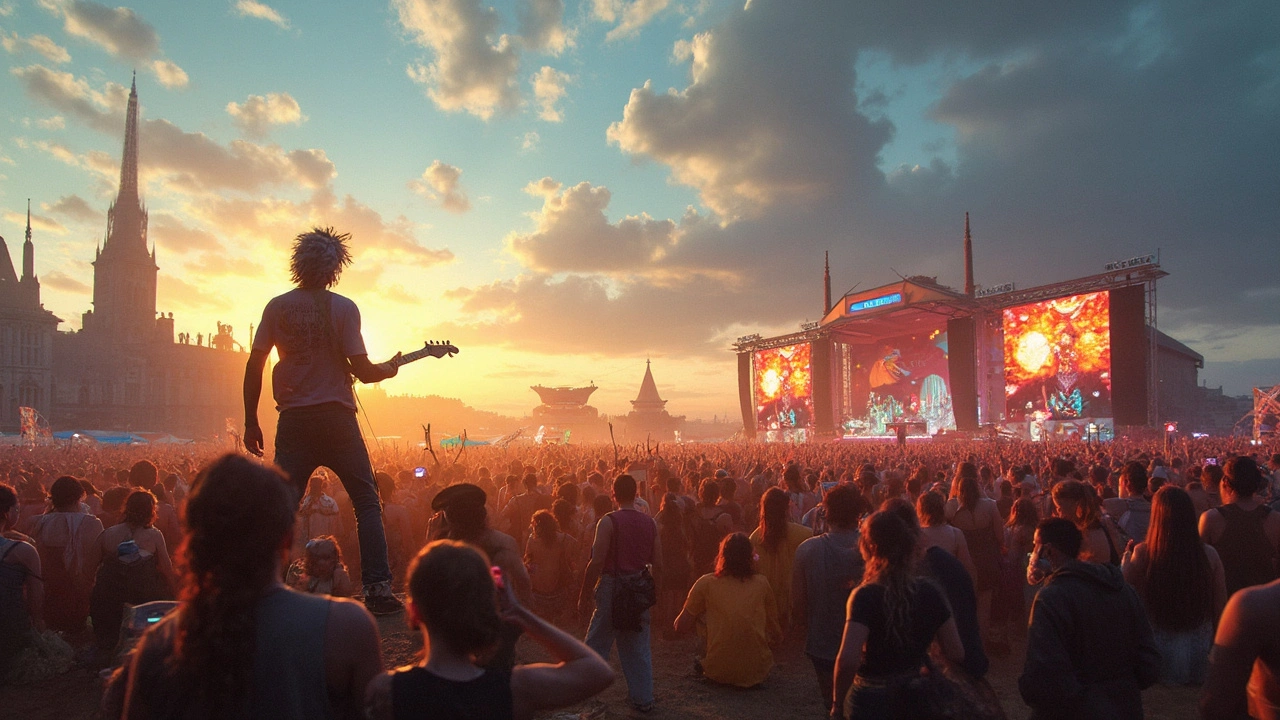
How You Can Catch the Trend Early
Ready to spot the future of music before the crowd? There’s actually a strategy to it. You don’t need to be some music exec or have insider hookups. All it takes is curiosity, the right tech, and knowing where to look.
Start by following the right sources. Streaming platforms like Spotify and Apple Music regularly push new releases from up-and-coming artists. Their algorithm-driven playlists—like Spotify’s “Fresh Finds” and “Pollen”—often feature tracks before anyone else considers them the "next big thing." According to Spotify’s 2024 data, 60% of viral breakout songs started on small, discovery-based playlists. So, keep an eye on those sections.
Social media is your friend. TikTok, especially, has become the biggest launchpad for new genres and micro-trends. Many of the top-charting songs in the past year—like the rise of phonk or hyperpop—went viral there first. My teenager, Leighton, picked up on new beats the moment they went live—beats I wouldn’t have heard on the radio for months.
- Join online music communities (like Reddit’s r/listentothis, Discord servers, or Facebook music groups). These spots crowdsource discoveries and hype songs way before they’re everywhere.
- Read music blogs like Pitchfork, Stereogum, and even local independent blogs. They highlight genre-blurring acts before mainstream sites do.
- Attend local shows or live streams from lesser-known artists. Genres and sounds often bubble up from small, creative communities.
- Use search tools on YouTube and SoundCloud to dig for fresh uploads. Filter by upload date, sort by lowest views—it’s how bedroom producers break out.
Watch for recurring themes: Does a certain new beat show up in lots of playlists? Are producers mixing styles you haven’t heard before? These are clues that something bigger is brewing. Don’t be afraid to step out of your comfort zone—sometimes the next big genre sounds weird at first. Most important: keep your mind (and ears!) open. Trends change fast, and those open to exploring new genres are the first to catch the wave.
| Platform | Why It Matters | Key Tip |
|---|---|---|
| Spotify | Playlists surface new talent | Follow "Fresh Finds" |
| TikTok | Early viral genre discovery | Search trending sounds |
| Crowdsourced recommendations | Try r/listentothis | |
| SoundCloud | Spot rising producers | Explore recent uploads |


